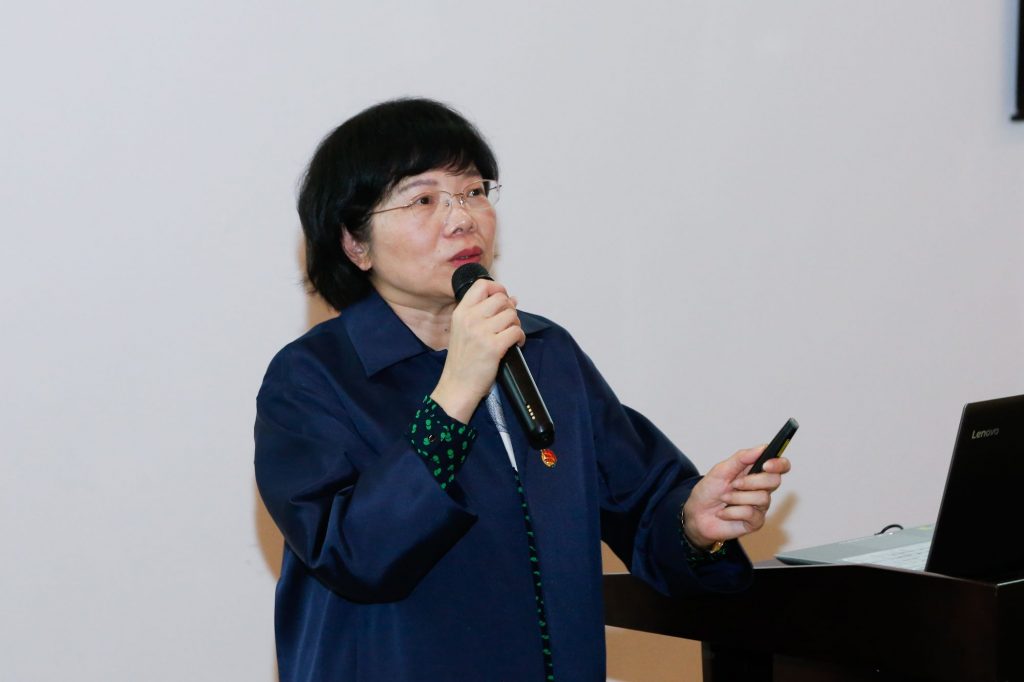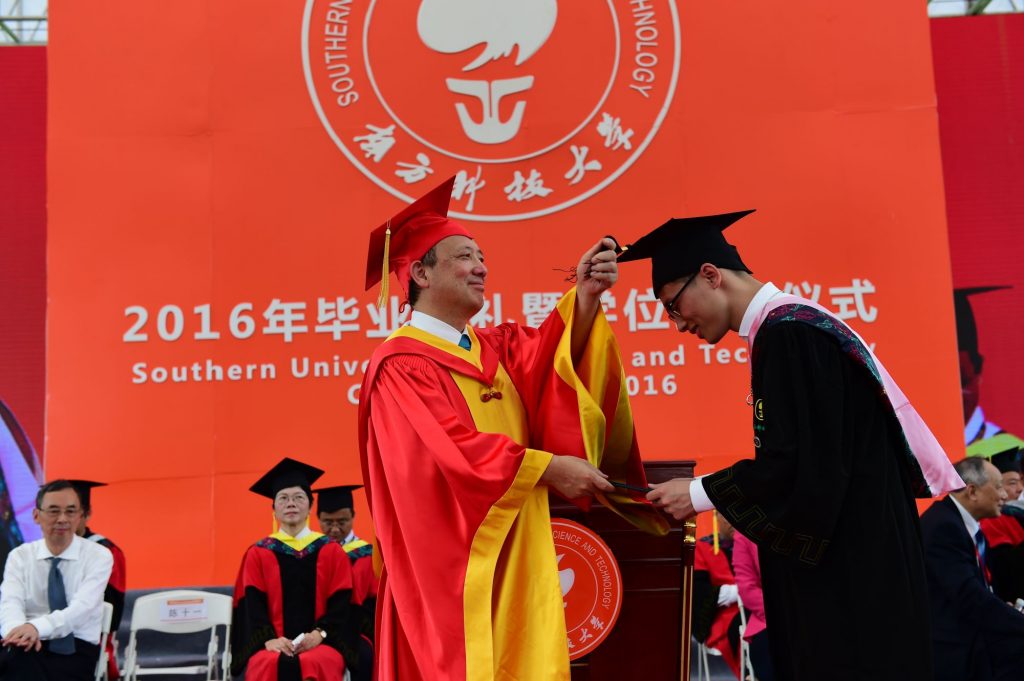Speeches
-
SUSTech hosts video broadcast of first lesson of spring semester(2020-02-20)
-
SUSTech President gives keynote speech at CHTF University Presidents Forum(2019-11-14)
SUSTech President gives keynote speech at CHTF University Presidents Forum
CHEN Shiyi President
Yesterday, the 21st China Hi-Tech Fair (CHTF) opened in Shenzhen. As part of that event, Southern University of Science and Technology (SUSTech) President Chen Shiyi gave a keynote speech at the Talents Fair of China Hi-Tech Fair 2019, specifically at the 2nd University President Forum. In his speech, President Chen Shiyi discussed the unprecedented and […]
Yesterday, the 21st China Hi-Tech Fair (CHTF) opened in Shenzhen. As part of that event, Southern University of Science and Technology (SUSTech) President Chen Shiyi gave a keynote speech at the Talents Fair of China Hi-Tech Fair 2019, specifically at the 2nd University President Forum.
In his speech, President Chen Shiyi discussed the unprecedented and historic dual development options that have arisen from the industrial transformation of the Greater Bay Area and the support of Shenzhen by all levels of government. The ability to attract talents to Shenzhen is a key driver of the Shenzhen economy, much like it is in bay areas like San Francisco, New York, and Tokyo. He added that the successful development of the Greater Bay Area is derived from its ability to attract innovative high-tech talents.
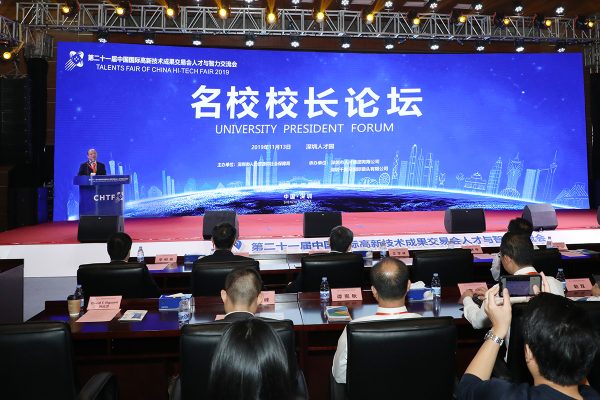
President Chen Shiyi examined Shenzhen’s innovative genes, emphasizing it as a critical characteristic for development in the new era. Numerous opportunities have surfaced for many first-class universities, scientific research platforms, and comprehensive national science centers, which are all working together to turn Shenzhen into a long-term talent pipeline that supports basic research, discipline development, and original innovations.
He stressed that universities must head down a path that cultivates national-level talents for their regions, to promote exchanges between outstanding talents of industry & scientific research institutions. The progress of future talent training systems will foster top-notch innovative talents for regional development and social innovation.
President Chen Shiyi added that the rapid development of SUSTech is a beneficiary of the high-level talents that SUSTech has accumulated throughout its short history. The young professors continue to perform above expectations, with SUSTech constructing a wide range of top-quality research institutes to support the development of scientific and technological innovation.
CHTF has hosted the University President Forum at the Talent Fair once before, and it aims to make significant contributions to the development of Shenzhen into an internationally competitive city.
-
SUSTech President speaks at 12th Glion Colloqium(2019-06-18)
SUSTech President speaks at 12th Glion Colloqium
CHEN Shiyi President
Last week, Southern University of Science and Technology (SUSTech) President Chen Shiyi was invited to the 12th Glion Colloquium in Montreux, Switzerland to discuss the role that the world’s leading universities should play in addressing the great challenges and opportunities of our times. Leaders from universities in Australia, Canada, the United Kingdom, the Netherlands, Germany, the Czech Republic, […]
Last week, Southern University of Science and Technology (SUSTech) President Chen Shiyi was invited to the 12th Glion Colloquium in Montreux, Switzerland to discuss the role that the world’s leading universities should play in addressing the great challenges and opportunities of our times. Leaders from universities in Australia, Canada, the United Kingdom, the Netherlands, Germany, the Czech Republic, Switzerland, the United States, Singapore, Japan, South Korea and India were all in attendance with President Chen Shiyi.
Founded in 1998 and held every two years, the Glion Colloqium is a think-tank on higher education for the leaders of research universities. The theme for the year’s Glion Colloqium operated was “The contrasting responses of Higher Education worldwide in promoting sustainable development.”
Following the tradition since its inception, the forum was informed by participants from a practitioner point of view rather than a scholarly point of view. The forum articles were submitted before the meeting and discussed for three days during the forum. The results of the discussion were incorporated into the revision of the articles, compiled in a centralized volume and shared with the public through the network.
Over the past 20 years, 250 university, business and government leaders have participated in the forum and participated in discussions on major issues such as the research universities for an ear of change, university governance, university-society relations, industry-university relations, and globalization of higher education. It has an inestimable impact on sharing experiences and forming common understanding among leaders of higher education in the world.
President Chen Shiyi spoke on the topic of “The Role of a Rising University in an Emerging International Metropolis.” Using the case study of education innovation at SUSTech and the University’s support for Shenzhen’s strategic and sustainable development, President Chen Shiyi analyzed the formation of partnerships between new Chinese universities and their sponsoring cities. He also discussed the important role of internationalization in developing modern Chinese university systems. His speech called on the international higher education system to continue to maintain its tradition of open exchanges in making contributions to global sustainable development.
The university leaders attending the Colloquium provided various perspectives when discussing several important issues. One such issues was how the societal mission of modern universities has evolved and shall develop in a social-economic context restructured by emerging science and technology in a rapidly shifting geopolitical climate. They also talked about what innovative education, research and service initiatives their universities have launched or may establish to support sustainable development and the future-oriented changes. The global impact of China and the rise of Chinese universities were frequently mentioned topics at the Colloquium. President Chen’s participation in the discussion enriched the understanding of the global university leaders about the development of research universities in China.
The university leaders came from the University of Sydney (Australia), University of Toronto (Canada), Charles University (Czech Republic), Humboldt-Universität zu Berlin (Germany), Ashoka University (India), Keio University (Japan), Utrecht University (the Netherlands), Nanyang Technological University (Singapore), National University of Singapore (Singapore), Korea University (South Korea), École Polytechnique Fédéale de Lausanne (Switzerland), ETH Zurich (Switzerland), University of Basel (Switzerland), the University of Geneva (Switzerland), University of Zurich (Switzerland), Imperial College London (UK), University of Cambridge (UK), University of California Berkeley (USA), University of Illinois (USA), and Rice University (USA).
-
President Chen Shiyi gives first lecture in “Modern Science, Technology and Your Love of Country” series(2019-02-22)
-
President Chen Shiyi Speaks On “First-Class Cities and First-Class Universities”(2018-10-18)
-
City TV Stations Experience Southern University of Science and Technology Success(2018-08-30)
-
Be Determined in Times of Change – President Chen Shiyi’s Speech for SUSTech’s 2018 Commencement Ceremony(2018-07-13)
-
President Chen Shiyi Delivered Speech on STEM Education(2018-07-03)
-
University Council Chairperson Guo Yurong Delivers CPC Lecture(2018-04-19)
-
2016 Commencement Address(2016-07-08)
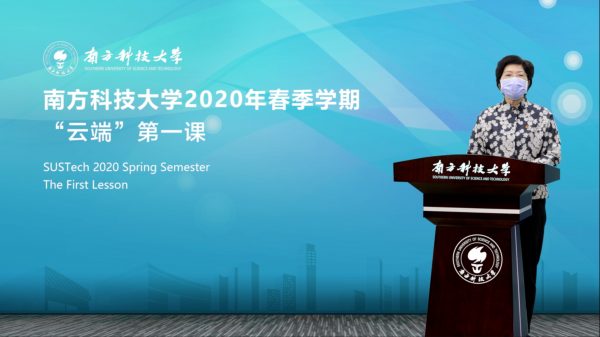
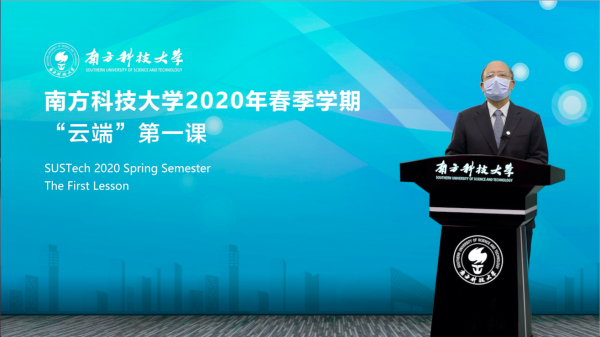
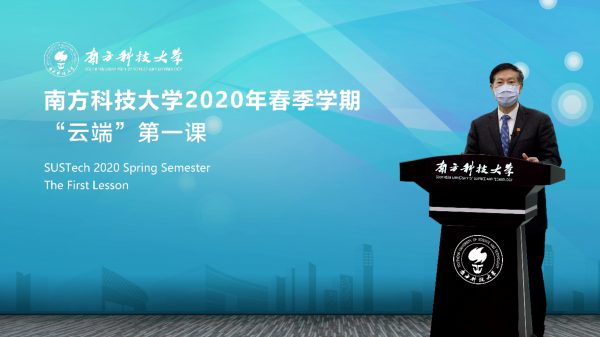
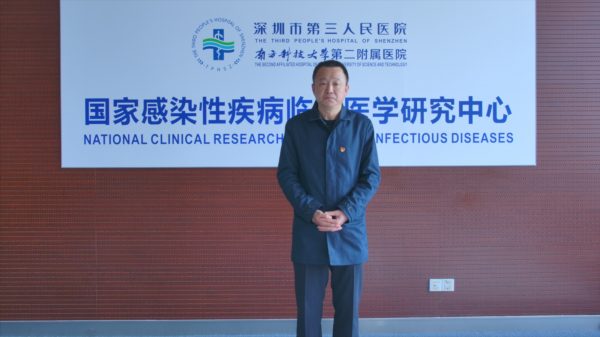
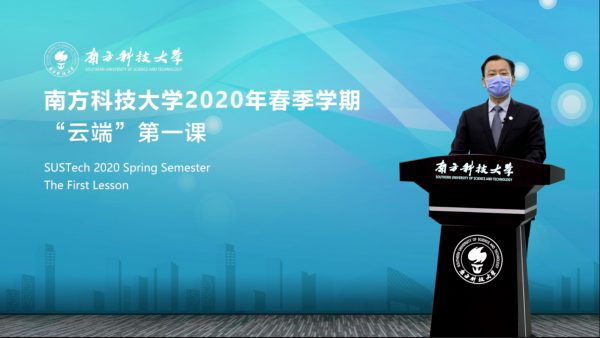




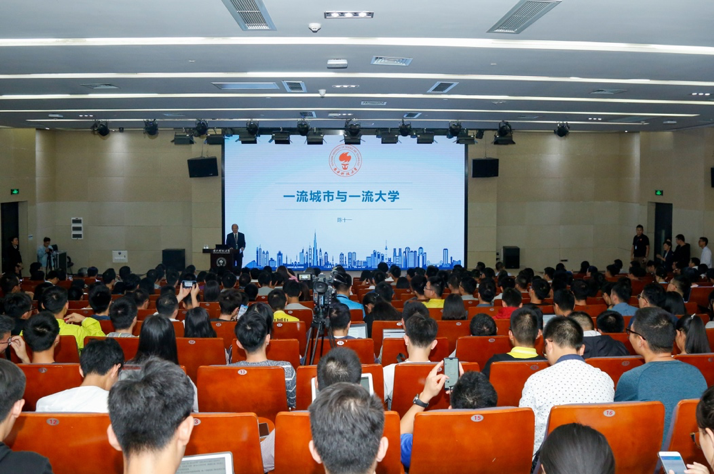
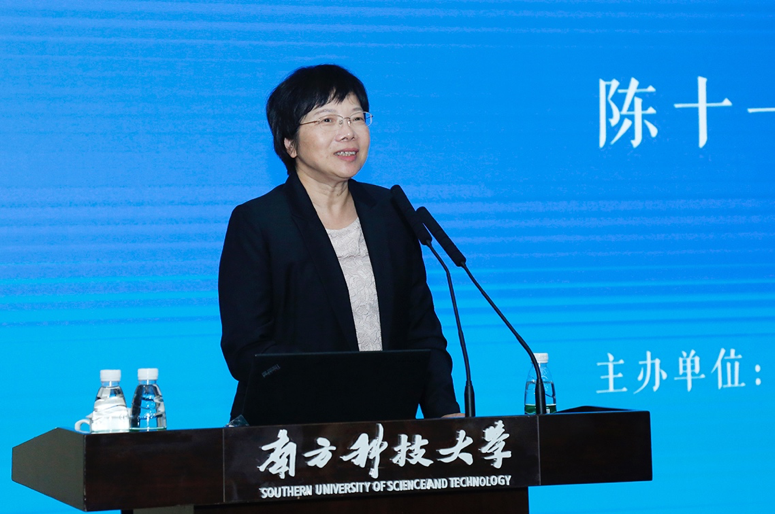
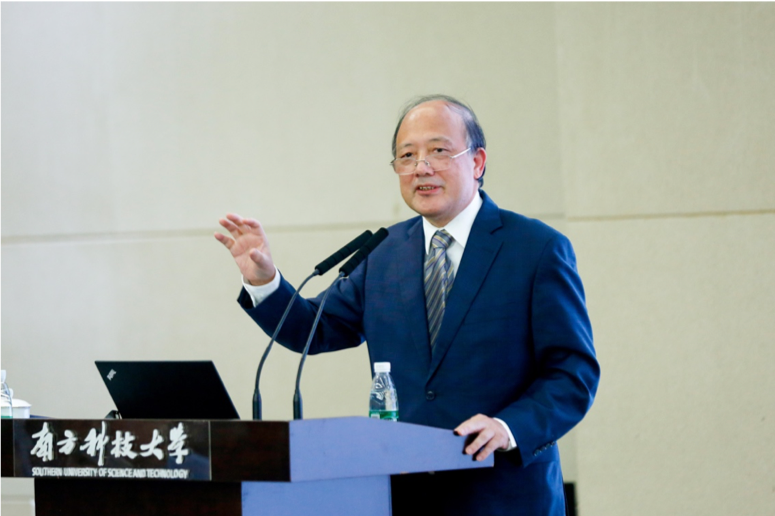
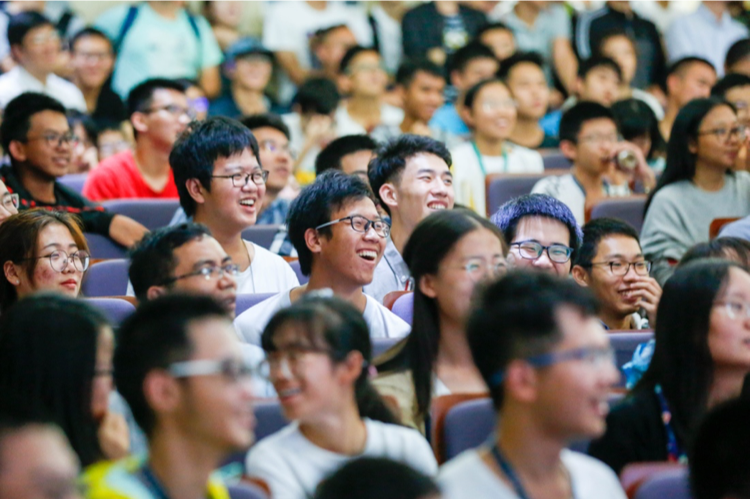
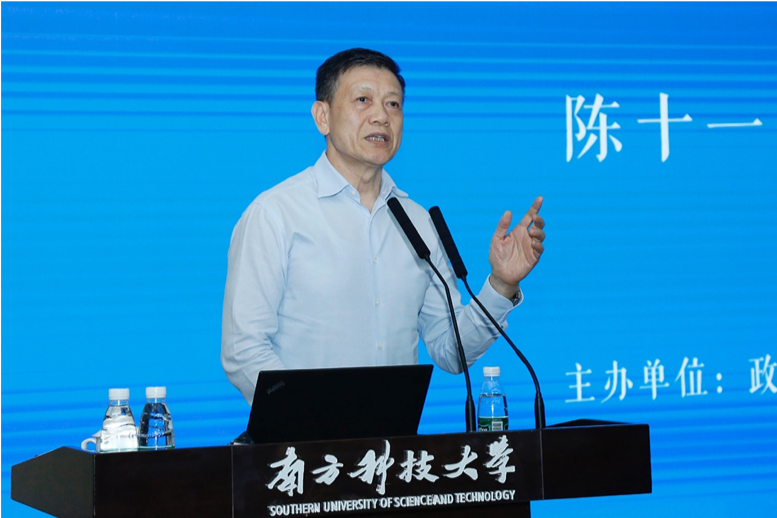

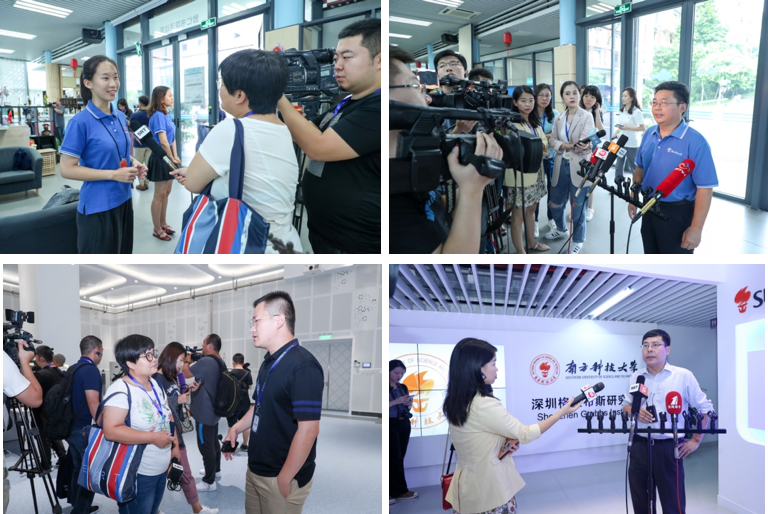
.jpg)
